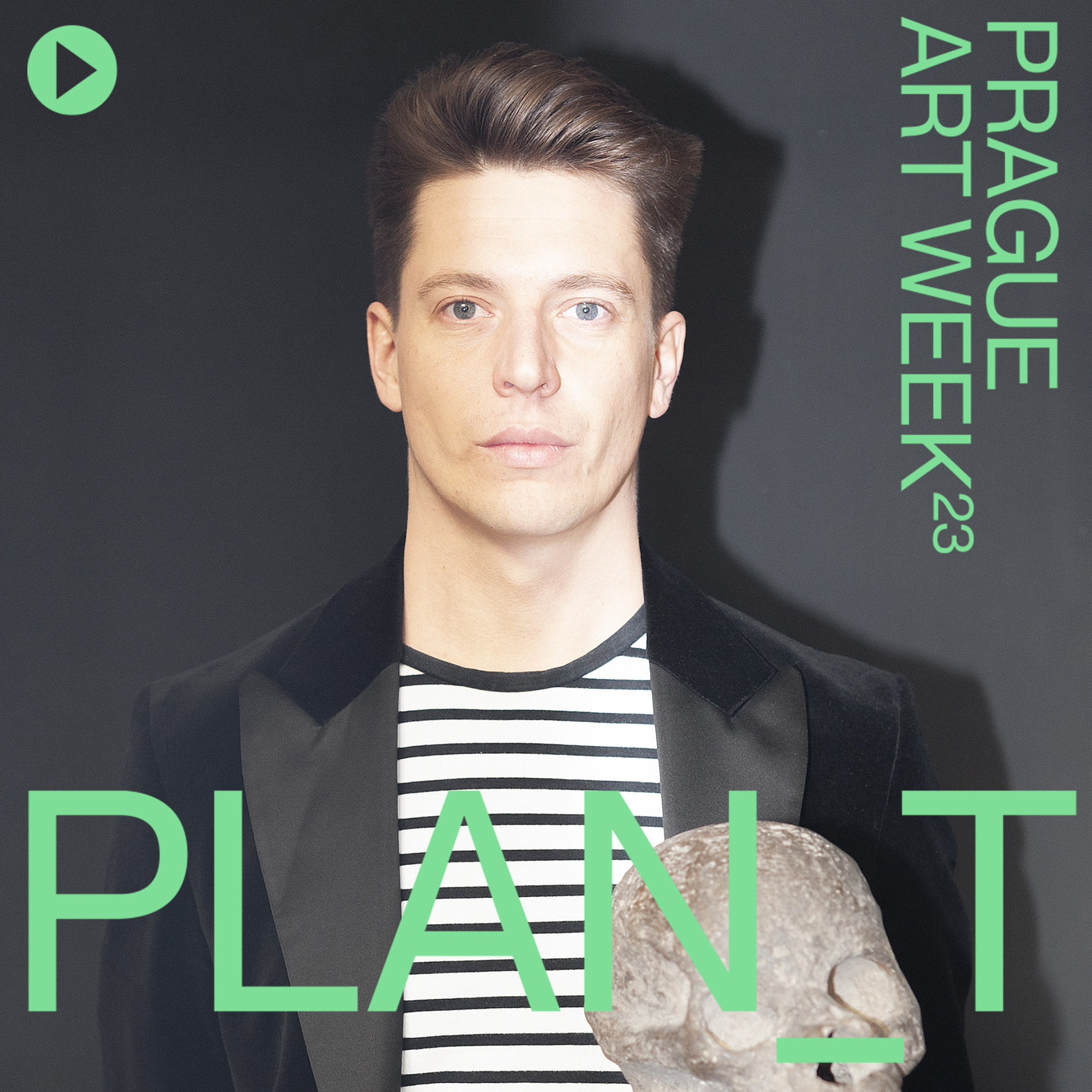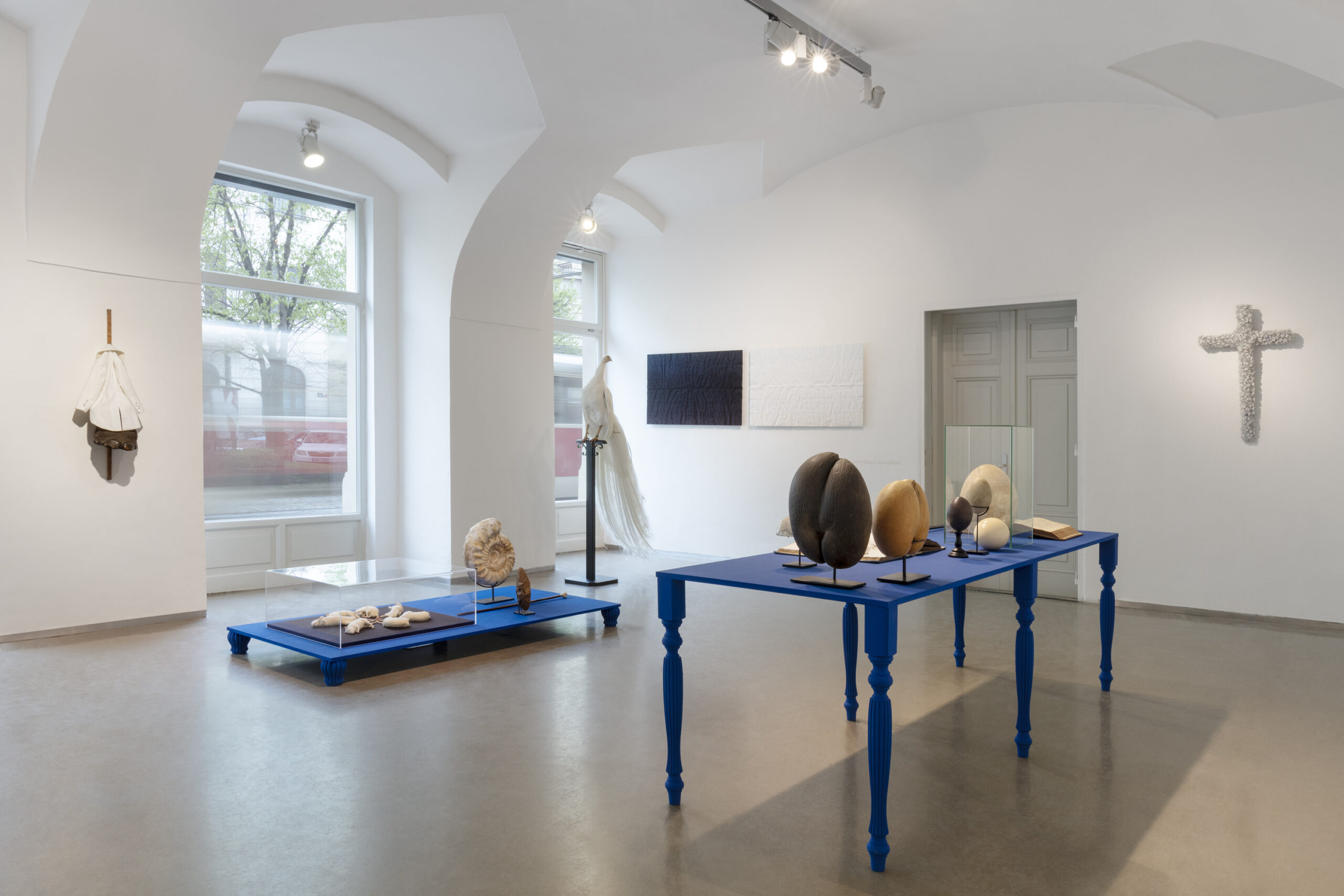What will grow out of the current discourse and how can we maintain a diversity of approaches to current topics? These questions are answered by Jan Dotřel, guest of the second episode of the podcast series PLAN_T.
Jan studied Aesthetics at Charles University and soon after his studies he started working at the Kvalitář Gallery, where he is now the chief curator. Kvalitář Gallery has been on the scene for 11 years and was founded with the original idea of contemporary artist Jana Bernartová as a platform to connect visual art and design. It is this synthesis that persists in the gallery, and under Jan’s leadership the focus is on the intersection of fine art and sculpture design. “We are currently focusing on the relationship between established artists and those just starting out. The unifying leitmotif I have brought into the concept is then the synthesis of art and science, which defines our exhibition plan,” Jan Dotřel describes the current intention of the gallery concept.
It is this discourse, which links fine art with other disciplines, that is increasingly relevant today. Philosopher Bruno Latour, among others, called for extra-artistic links, understanding art as a field for mutual cooperation and multidisciplinarity. At the same time, the Kvalitář gallery mainly represents artists who reflect a metaphysical overlap in their work. “It is precisely to such an overlap that a large number of artists make use of extra-disciplinarity, focusing on science – geometry, astronomy, geology, more exact disciplines and enriching the exact approach with a deeper meaning.”
Currently, Kvalitář presents the exhibition ANALOGON from the collection of Oldřich Th. Uttendorfský. “Mr. Uttendorfský has a unique relationship to collecting art, but also to nature. The current exhibition is an expression of trust and mutual cooperation, a presentation of and confrontation with the extraordinary nature of this collection. Natural objects, artefacts such as cabinet of curiosities, contemporary art, ancient art dating back to Mesopotamia, Antiquity, Ancient Egypt create a strange conglomeration of things that have a unique visual value that Mr Uttendorfský has built up,” says Jan, adding that the collection includes several dozen items that the owner curates himself. It is this character and genius loci that Dotřel and his curator, Lenka Lindaurova, have tried to bring to Kvalitář.
The exhibition also opens up questions related to contemporary postcolonial discourse. It is conceived as a faithful reflection of the collection, and most of the acquisitions from the problematic postcolonial were made fifty or sixty years ago, in a completely different era. But in the present day, the collector is not buying anything that is in any way controversial. “So all the artefacts coming from problematic countries were bought before the postcolonial discourse, and Mr Uttendorfsky now supports museums of non-European art emerging in these areas,” Jan describes the collector’s approach, adding that a certain controversy is part of the exhibition’s concept, which invites a two-way debate over these issues.
From the point of view of planning and planting seeds in the field of art, Jan believes that we can expect a harvest as a result of contemporary reflection on current issues through artistic approaches. For many issues, art can be a suitable form of articulation and, according to the curator, there is often no better way of expression. The meeting of scientist, philosopher and artist who complement each other within the same exhibition project can thus be a fertile moment that leads to mutual enrichment, influence and the maintenance of a diversity of approaches. He sees art as one of the most stable pillars of human civilization, and it is this diversity and interdisciplinarity that Jan Dotřel hopes for its future.

